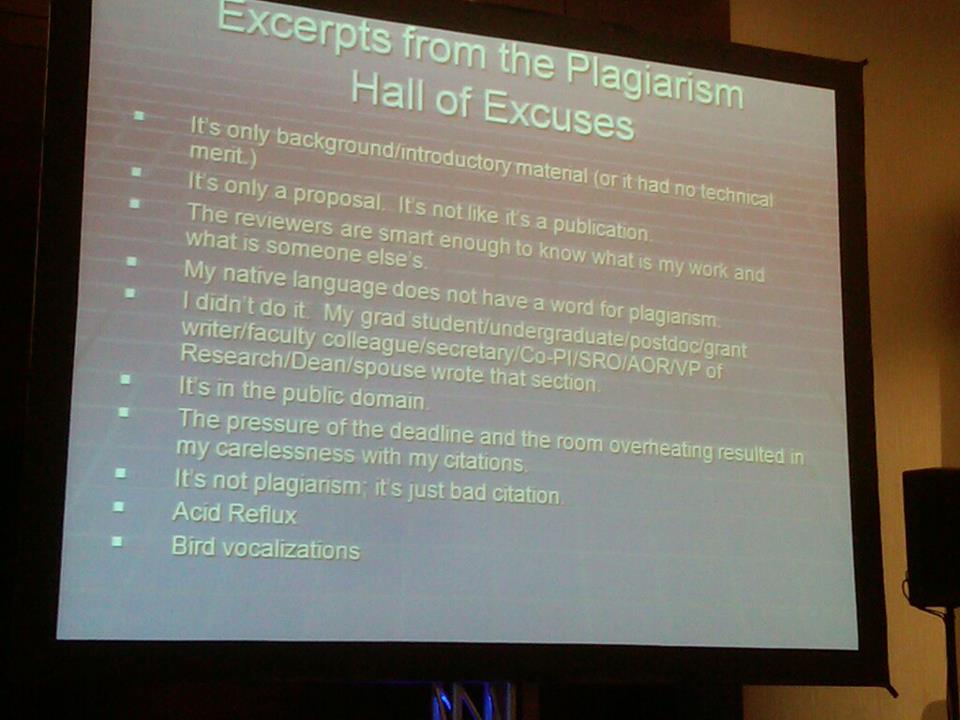
It’s happened to all of us: You’re putting the final touches on your manuscript and run plagiarism detection software against it. Somehow, part of the software’s report ends up in your abstract — and neither you nor the peer reviewers nor the publishing team notices.
Well, it’s happened to one group of researchers, anyway.
Here’s one such passage, which appears right in “Identification of Selective Forwarding Attacks in Remote locator Network utilizing Adaptive Trust Framework,” a 2019 paper that was part of the IOP Conference Series: Materials Science and Engineering:
Warning: Demo Version – reports are fragmented! Abnormal state of Plagiarism might be identified! Get your entire report: 1. Most point by point reports. 2. Moment permit initiation. 3. Lifetime bolster.
The text splits the word “evaluates” in half, making for a split verb if not exactly a split infinitive. Here it is in situ (formatting ours):
Discovery of SFA in Wireless Sensing Networks utilizing Adaptive and Channel mindful Reputation Systems. Wireless detecting component systems (Wireless sensor networks) use unit defenseless against SFA. It will malignantly drop a subset of forward packets to corrupt system execution and also imperil the information trustworthiness. It represents a decent test to distinguish the malignant drop and conventional bundle misfortune. Amid this paper, we propose a Channel-mindful name System with versatile recognition edge (Adaptive – Channel – mindful notoriety framework) to discover SFA in Wireless sensor networks. The Adaptive – Channel – mindful notoriety framework eval Warning: Demo Version – reports are fragmented! Abnormal state of Plagiarism might be identified! Get your entire report: 1. Most point by point reports. 2. Moment permit initiation. 3. Lifetime bolster. uates the data forward behaviors of sensor hubs, in venture with the deviation of the observed bundle misfortune and furthermore the measurable conventional misfortune. To streamline the exact location of Adaptive – Channel – mindful notoriety framework, we tend to in principle determine the best limit for forward analysis Broad reproduction comes about show That Adaptive – Channel – mindful notoriety framework will precisely discover SFA and decide the bargained detecting component hubs, though the assault tolerant data forward theme will essentially enhance the data conveyance size connection of the system.
Sadly, we do not know what the report itself says. The corresponding author, B. Baron sam, of the School of Computing at the Sathyabama Institute of Science and Technology in Chennai, India, did not respond to requests for comment.
This little gem was flagged by Nick Wise, an engineering graduate student at Cambridge.
Lauren Flintoft, a research integrity officer at IOP Publishing, which published the conference series, told Retraction Watch:
I’m afraid we weren’t aware of this matter. We’ll make sure to investigate in line with the principles set out by COPE, and I will keep you informed of any outcome of the case as appropriate.
Of course, this is hardly the first time authors inadvertently left a revealing editing comment in a paper. Anyone remember “Should we cite the crappy Gabor paper here?”
Like Retraction Watch? You can make a one-time tax-deductible contribution or a monthly tax-deductible donation to support our work, follow us on Twitter, like us on Facebook, add us to your RSS reader, or subscribe to our daily digest. If you find a retraction that’s not in our database, you can let us know here. For comments or feedback, email us at [email protected].
That is one fine specimen of “tortured phrases” right there.
Journals that publish this sort of thing should go straight onto a questionable-journals list (if we could maintain one anymore)–it is hard to believe that any English-speaking reviewer ever read this text. (Even a barely English-speaking one should have noticed the intrusive plagiarism-detector text….)
As Nick Wise pointed out in the Pubpeer thread, the plagiarism-detection report found its way into the text before the engarblement took place, and contains some engarblement of its own.
This is what would happen if, hypothetically, some authors assembled text from various sources and ran a plagiarism check to see how recognisable the sources were (i.e. how much it needed engarbling to obscure them).
Is the corresponding author’s surname “Baron sam”? One upper case component, one lower case component? He cites his own name as “Baron Sam” in footnote 18 to this paper. I’m also concerned by his co-author, one “Reddy.V” — is there a full stop within his surname?
Footnote 17 is also a bit interesting: it cites “Relieving directing rowdiness in versatile impromptu systems” by Mary Pastry specialist et al., which I suppose is the Bizarro World version of “Mitigating Routing Misbehavior in Mobile Ad Hoc Networks” by Mary Baker et al.
While it is plausible that IOP were not aware about this paper, they are well aware about other instances of paraphrasing plagiarism in their proceedings.
https://pubpeer.com/publications/02D081194AD140F5E6C7998BEB85AC – that’s where all the stuff about tortured phrases originated. Reported to IOP in late April.